![]()
![]()
![]()
Use LEFT and RIGHT arrow keys to navigate between flashcards;
Use UP and DOWN arrow keys to flip the card;
H to show hint;
A reads text to speech;
56 Cards in this Set
- Front
- Back
|
Squamous Cell |
Flat, wide and somewhat irregular in shape |
|
|
Cuboidal cell |
About the same size on all sides, nucleus is usually centrally located. |
|
|
Columnar cell |
Taller than they are wide; nucleus is oval and located in the basal(bottom) region of the cell. |
|
|
Simple squamous epithelium function? |
•Single layer of flat cells •allows for rapid exchange •found in air sacs of the lung |
|
|
Simple cuboidal epithelium function? |
•single layer of body cells •allows for absorption and secretion •found in lining glands like the thyroid, respiratory passages and in the kidneys. |
|
|
Non ciliated Simple columnar epithelium function? |
•single layer of tall narrow cells. •apical regions of cells have microvilli •absorption and secretion of mucin •found in the lining of the digestive tract |
|
|
Ciliated simple columnar epithelium? |
•single layer of tall narrow cells •oval shaped nucleus •secretes mucin and moves mucus along Galicia surface of epithelium. •locates in the lining of the uterine tubes and larger bronchioles of RT. |
|
|
Pseudostratified columnar epithelium? |
•single layer of cells w/ varying heights •appear multilayered •all cells connect to the basement membrane •not all cells reach the apical surface. •good for protection, secretion and movement of mucus by cilliary action. •locates in most of the RT including nasal cavity, larynx, trachea and bronchi, lines epididymis and part of make urethra |
|
|
Keratanized? |
Dead |
|
|
Non-keratanized |
Live tissue |
|
|
Nonkeratanized stratified squamous epithelium? |
•multiple layers of cells •function is protection of underlying tissue. •found in lining of oral cavity, part of pharynx, vagina, esophagus, anus. |
|
|
Loose connective tissue (CT)? |
•Fibers create loose open framework. •examples: areolar tissue, adipose tissue, reticular tissue. |
|
|
Areolar connective tissue |
•vascularized, ground substance is gel like, scattered fibroblasts, many blood vessels. •surrounds and protects tissues and organs, loosely binds epithelial to deeper tissues, many blood vessels •located on the dermis layer under skin, and surrounds organs. |
|
|
Adipose connective tissue |
•closely packed adipocytes (fat cells) nucleus squeezed to one side by large fat droplet •it stores energy, protects, cushions, and insulates. •located in the subcutaneous layer, covers and surrounds some organs. |
|
|
Reticular connective tissue (cherry blossom) |
•ground substance is gel-like liquid, scattered arrangement of reticular fibers, fibroblasts and leukocytes •provides supportive framework for spleen, lymph nodes, thymus, and bone marrow •it’s located and forms stroma of lymph nodes, spleen, thymus, bone marrow. |
|
|
Dense Regular. |
•Densely packed parallel collagen fibers, fibroblast nuclei squeezed between layers of fibers. •attaches muscle to bone and bone to bone •resists stress applied in one direction. •forms tendons and most ligaments |
|
|
Dense irregular CT |
•predominantly collagen fibers, randomly arranged and clumped, fibroblasts in spaces among fibers •withstands stresses applied in all directions; durable. •located in the dermis, periosteum covering the bone, perichondrium covering cartilage, organ capsules. |
|
|
Hyaline cartilage |
•glassy appearing Matrix; lacunae house chondrocytes, usually covered by perichondrium •smooth surfaces for movement at joints, model for bone growth, supports soft tissue. •most of fetal skeleton; cover articular ends of long bones, coastal cartilage most of the larynx, trachea, nose. |
|
|
Fibrocartilage cartilage |
•readily visible, parallel collagen fibers in matrix, lacunae house chondrocytes, no perichondrium. •resists compression; absorbs shock in some joints. •located IVD, pubic symphysis, menisci of knee joints. |
|
|
Elastic CT |
•predominantly freely branching elastic fibers; fibroblasts occupy some spaces between fibers •allows stretching of some organs •located in the walls of Easton arteries, trachea, bronchial tubes, true vocal chords, suspensory ligaments of penis. |
|
|
Elastic CT |
•mostly free branching elastic fibers; fibroblasts occupy some spaces between fibers •allows stretching of some organs •located in the walls of Easton arteries, trachea, bronchial tubes, true vocal chords, suspensory ligaments of penis. |
|
|
Compact bone |
•compact bone has calcified matrix arranged in osteons. •supports soft structures, protects vital organs, provides layers for movement, stores calcium and phosphorus •located in the bones of the body. |
|
|
Ocular lense? |
10x |
|
|
Ocular lense? |
10x |
|
|
Scanning magnification? |
4x Example: 10x4=40 |
|
|
Low objective magnification |
10x Example: 10x10=100 |
|
|
High objective magnification |
40x Example: 10x40=400 |
|
|
Total magnification formula? |
Ocular lense x objective lense=total magnification |
|
|
Name the four types of tissue in the body? |
•epithelial tissue •connective tissue •Muscle tissue •nervous tissue |
|
|
Epithelial tissue |
•avascular •cellular •polar •attached •innervated •high regeneration •covers surfaces •lines insides of organs and body cavities. |
|
|
Connective tissue |
•diverse type •all contain cells, protein fibers, and ground substance •protects •Binds together •supports organs |
|
|
Connective tissue |
•diverse type •all contain cells, protein fibers, and ground substance •protects •Binds together •supports organs |
|
|
Muscle tissue |
•Contractile; receives stimulation from Nervous and/or endocrine system •facilitates movement of skeleton or organ walls |
|
|
Connective tissue |
•diverse type •all contain cells, protein fibers, and ground substance •protects •Binds together •supports organs |
|
|
Muscle tissue |
•Contractile; receives stimulation from Nervous and/or endocrine system •facilitates movement of skeleton or organ walls |
|
|
Nervous tissue |
•neurons: excitable, high metabolic rage, extreme longevity, nonmitotic, •The neurons control activities, process info / glial cells: support and protect neurons |
|
|
Front (Term) |
Simple squamous epithelium |
|

Front (Term) |
Simple squamous epithelium |
|
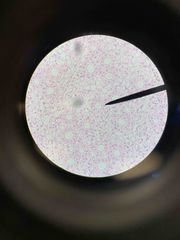
Front (Term) |
Simple cuboidal epithelium |
|
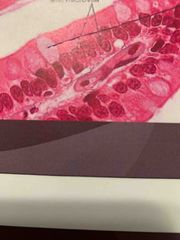
Front (Term) |
Nonciliated simple columnar epithelium |
|
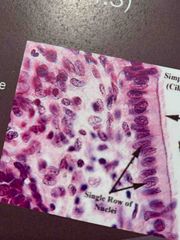
Front (Term) |
Ciliated simple columnar epithelium |
|
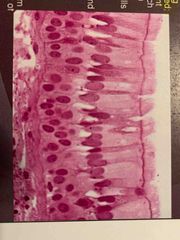
Front (Term) |
Pseudostratified columnar epithelium |
|

Front (Term) |
Nonkeratanized stratified squamous epithelium |
|
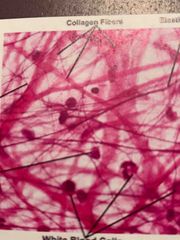
Front (Term) |
Areolar connective tissue |
|
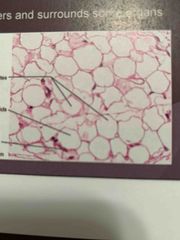
Front (Term) |
Adipose connective tissue |
|
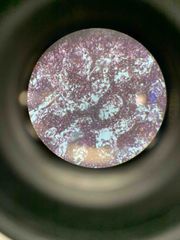
Front (Term) |
Reticular connective tissue |
|
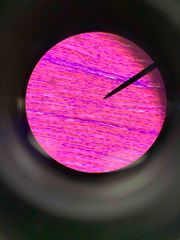
Front (Term) |
Dense regular connective tissue |
|
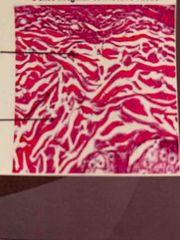
Front (Term) |
Dense irregular connective tissue |
|
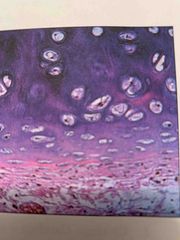
Front (Term) |
Hyaline cartilage |
|
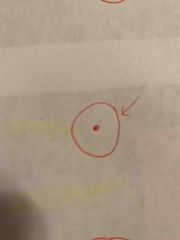
Front (Term) |
Lacunae |
|
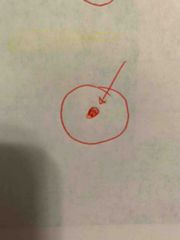
Front (Term) |
Chondrocytes |
|

Front (Term) |
Fibrocartilage |
|
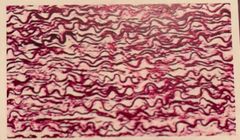
Front (Term) |
Elastic connective tissue |
|
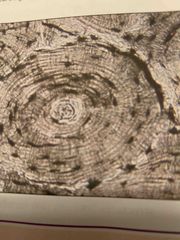
Front (Term) |
Compact bone |
|

Front (Term) |
Blood |
|
|
Blood |
•Plasma •function is to transport nutrients, wastes and hormones through out the body •formed elements are erythrocytes, platelets, leukocytes |

